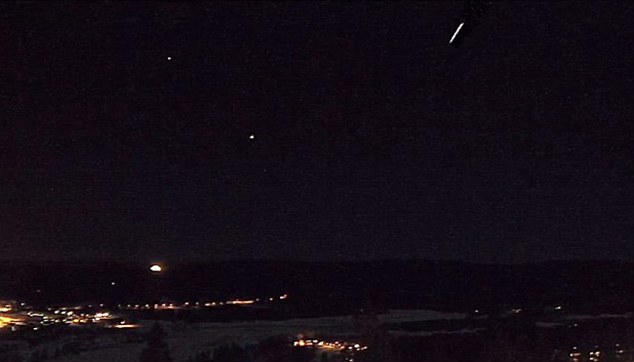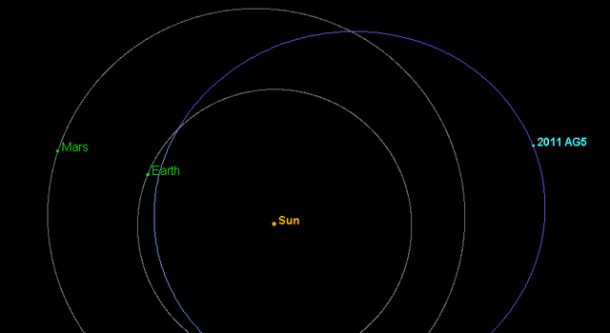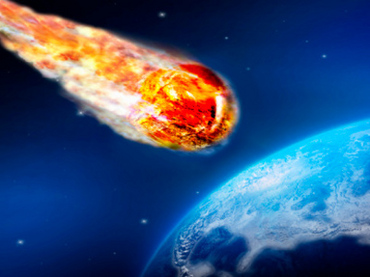Thousands of stargazers witnessed a spectacular meteor shower last night.
It lit up the skies across the north of England and was spotted as far south as Peterborough.
The meteor exploded after streaking across the night sky for more than 30 seconds.

© The Daily Mail, UKStarstruck: The meteor, visible in the top right hand corner of this image as an elongated white streak, was seen in the skies across the north of England and was spotted as far south as Peterborough.
The shower was seen at various locations across England, including Manchester, Derbyshire and the Lake District.
Hundreds of people posted messages on Twitter after witnessing the event unfold. Scores even put their own video footage of the shower on the internet.
The meteor was first spotted at 9.38pm but other sightings were reported until 9.45pm - which backed up speculation on Twitter that there had been more than one meteor.
Some reports suggested there was a large meteor followed by a series of smaller ones.
One Twitter user wrote: 'The Amazing #Meteor looked like a plane from Man Airport but then seems to rise and burn up in front of me near #JodrellBank.'



Comment: The reader may want to check out the discussion about these strange sounds on Laura Knight-Jadczyk's FB page as well as the Forum discussion here, and this SOTT Focus by Joe Quinn: New Sott Report: Strange Noises in the Sky: Trumpets of the Apocalypse?